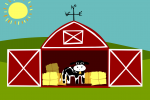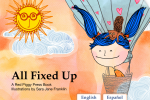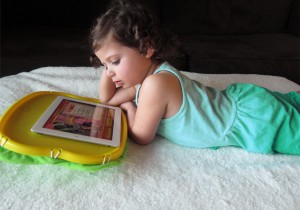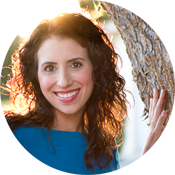The word engagement is no longer synonymous with media-seeking adults. The Age of Digital Publishing has set new standards for how kids expect to be engaged. And the tots (ages 2-3) and preschoolers (ages 3-5) running half-naked around the house (at least in mine) may be developers’ most discerning audience yet.
Why?
10. Good apps are like chocolate and candy. Once kids get a taste of the good stuff, they know they don’t need to settle for less than quality.
9. Preschoolers have short attention spans. They want to play and be entertained. They learn quickly that apps are intended to be interacted with, and they grow bored by storybook apps that lack stimulation.
8. Preschoolers quickly develop expectations. If the expectation is that print books are meant for reading and listening, and ebooks and apps are meant for reading, interacting and engaging, then they place a different level of expectation on a storybook app. For example, a young child might really love one of the princesses. But if she is accustomed to interacting with apps and a certain princess ebook contains only limited or (gasp) no interactivity, the child is quite likely to abandon it.
7. Preschoolers like routine. (This is why we, as parents, are taught no sooner than a baby is born to implement sleep routines, bedtime routines, eating routines, homework routines, discipline routines and more). How does routine affect app popularity? Well-placed interactivities and repetition (with just enough variety) often leads to hilarious outcomes.Take The Monster at the End of this Book – a well-known, popular print book-turned-app. Could just have easily been a plain, non-eventful e-book. But some really creative art direction, engineering and sound effects make this app into a household favorite for my 3-year-old.
6. Preschoolers feel empowered by educational content in apps. And they know intuitively that not all apps are built the same. Puzzles are the best example. Some are much easier for little fingers to maneuver than others, while others have really cool praise announcements with music upon completion. Toddlers pick up on these signals. Mickey’s Spooky Night Puzzle Book and Angelina’s New Ballet Teacher are two completely different apps that both offer fun, age-appropriate puzzles for 2-4 year olds and give them the kind of reward and praise they are seeking.
5. Preschoolers like familiar, likeable characters… but the characters are only as good as the apps. This is in reference to licensed characters versus non-licensed characters. Neither is better than the other, necessarily. At first, toddlers may gravitate to familiar characters they have seen on television or in their print books (Spongebob, Scooby-Doo, Dora, Princesses, etc.), but the characters alone are not enough to captivate their attention. The apps must be equally stimulating and engaging. On the other hand,with non-licensed content, new characters may be introduced and toddlers may quickly become enthralled because the character, like a teddy bear, is cute and fun. Teddy’s Day (winner of the 2011 Appy Awards for books) is a wonderful storybook app and a top-rated app. It is also the featured video of this post with my daughter in awe that a teddy bear could be so animated. 🙂
4. Free is not always better. There are loads of free kids apps out there, and some may be okay, but the landscape has become so competitive that the only way for publishers and developers to turn a profit is to charge for their apps. That being said, Disney offers some “lite” versions of their apps that give a flavor of what the app will be like. And Hasbro features a decent My Little Pony free storybook app. But the fact is, most free apps will lead you to in-app purchases of the full version or other apps that are just better. Here’s the best-kept secret for app-seeking parents: www.momswithapps.com has free downloads of great apps (regularly priced anywhere from $0.99 to $4.99) every Friday on “App Friday!”
3. Preschoolers want to play and have fun. They learn quickly that apps are built with interactivities just for them and they expect all apps to be equally, if not more, engaging.
2. At the end of the day, it all comes down to telling a good story. Apps are no exception. The key is to combine age-appropriate storytelling with engaging interactivity. If you can work in educational content, you’re golden!
1. Kids want to touch EVERYTHING! Have you ever met a toddler or preschooler who didn’t want to touch everything? For this reason, this mom blogger loves Disney’s It’s a Small World app. It’s A Small World is not only a beautiful app parents will enjoy too, but it takes kids on a journey to all the nations of the world and teaches them a little bit about each one through gorgeous imagery, characters, animals, sounds and music that they interact with. They can touch and affect several components in a scene.
With all of these criteria developing at such a tender young age, preschoolers will continue to expect great content… and they will grow into older kids who expect more great content at the next level. It remains a personal choice as to when parents first expose their children to digital content, but the fact remains that digital is revolutionizing our world in every way. There are lots of great apps out there, and apps can be a wonderful source of educational content and enjoyment for parents and kids to do together. Just don’t be surprised by the tech savvy preschooler you didn’t know you had.
Happy Tech Parenting!
Shoshana Stopek (aka Mommy Tech Bytes)
Connect with me on Google+ and Twitter
Follow me on The Daily Mom app






